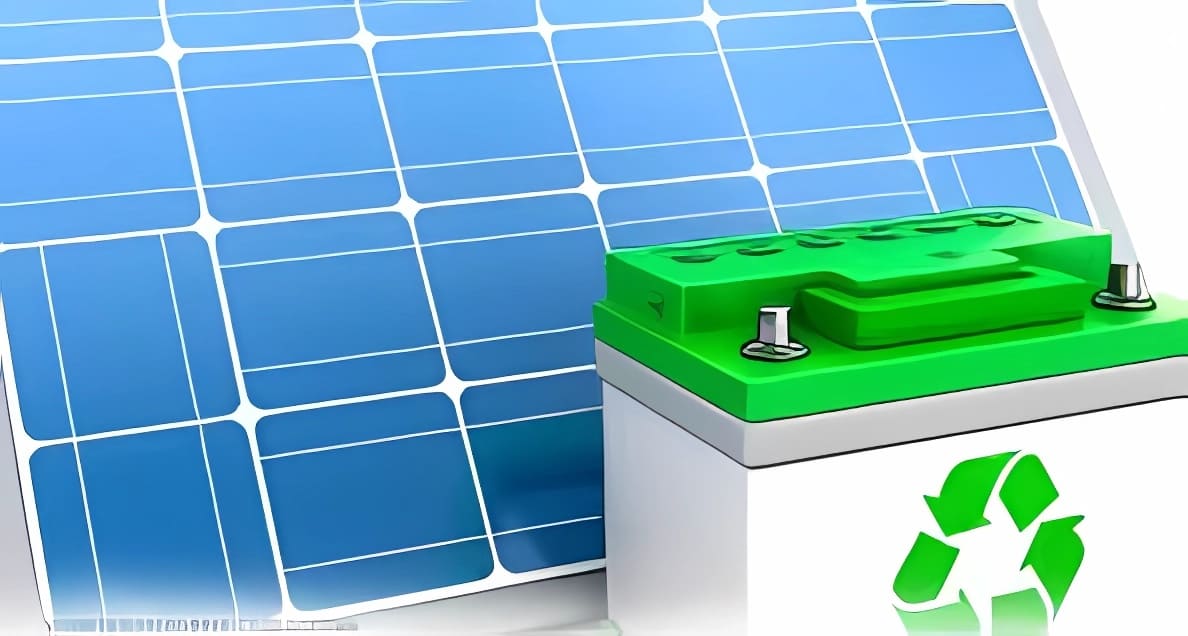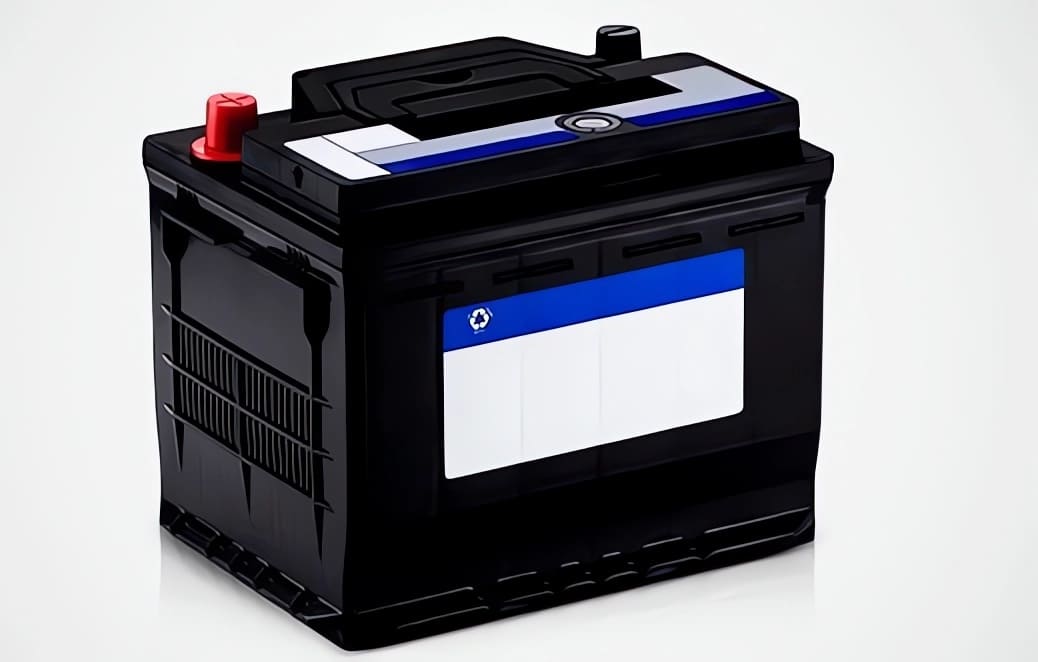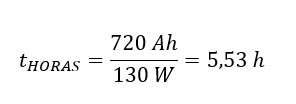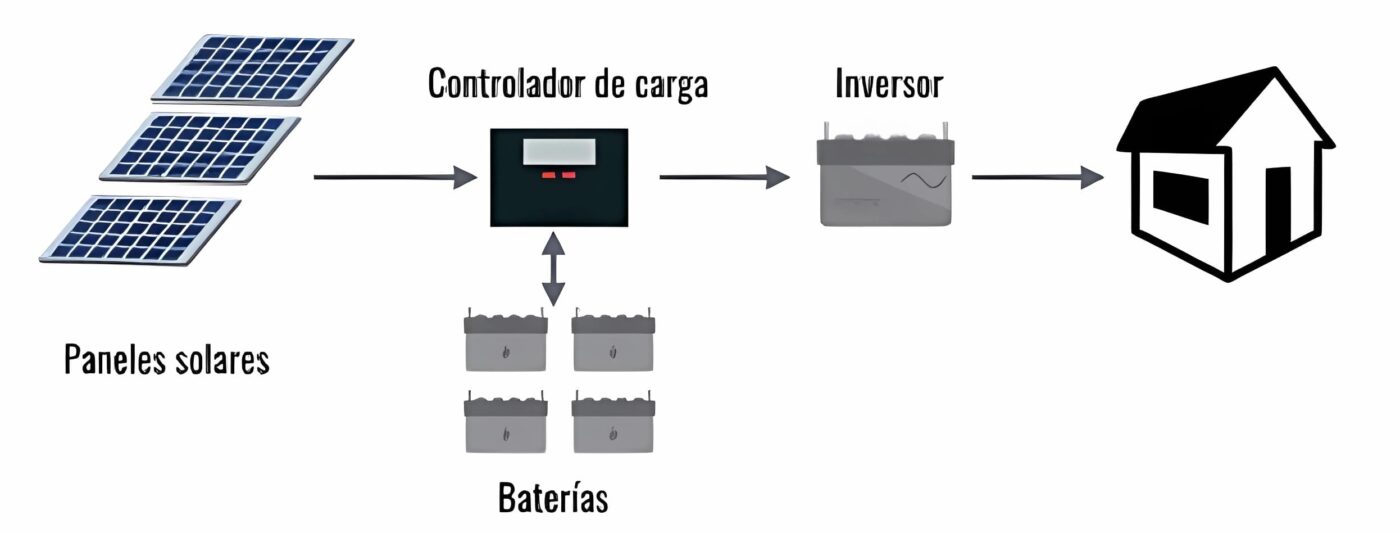Solar Energy
Affordable solar power system battery
The idea behind a affordable solar power system is to provide alternative electricity to the normal grid with a low investment. However, if you want to have this availability during nighttime or cloudy days, you need to store it for later use.
You achieve this through batteries, also called accumulators, which you would recharge using the same solar panel. Although these terms don’t exactly mean the same thing, for the purposes of this article, we will consider them as synonyms.
Next, let’s explore which ones you could acquire for use in your low-budget photovoltaic system. Also, what you should take into account for their use.
Solar batteries are items that turn out to be very expensive

While it is true that this type of accumulators has a high price, there are other options that are much cheaper. Although they have some limitations such as:
They are not designed for slow discharge
This implies that their plates are thinner, so they are designed to deliver a lot of power in very short periods of a few seconds.
Its lifespan is shorter than that of solar batteries
Indeed, not being built for slow discharge, their lifespan is reduced. It is estimated to withstand about 500 cycles of shallow discharge, which would be, in time, around a few months to a year.
But keep in mind that this period can be longer or shorter depending on the usage and care you provide. Regarding the latter, check out our article Tips to extend the lifespan of your batteries.
They provide a shorter backup time than what solar batteries offer
Since their capacity for slow discharge is approximately 60 to 70 Ah. However, for a low load, they can support several hours. In terms of car batteries, this capacity is equivalent to about 900 Ah.
They are much more economical than solar batteries, but depending on the load, they provide fewer backup hours than the latter.
The characteristics of my accumulator

As I have limited funds to invest in my photovoltaic system, I opted to purchase a car battery. I know, I know, it’s not recommended for this use, but one designed for solar applications costs me around $250. Unfortunately, I don’t have that amount to spend on it.
So, I bought a battery with a capacity of 900 Ah. Remember that this capacity refers to the energy it can supply at the moment of the car’s start for a few seconds. Reviewing its technical specifications, it has a 60 Ah rating for slow discharge.
The price of this product was $85. Despite being aware that it won’t perform or last as long as a solar battery, I still hope it will meet my energy needs for several months, perhaps even more than a year.
What loads can I connect to my affordable solar power system?

In my case, my affordable solar power system consists of a 500 Wp solar panel capacity with a 500 W modified sine wave inverter. The loads connected to this system are:
- 1 PC: 150 W
- 1 Laptop: 80 W
- 1 Modem: 20 W
- 1 Cell phone charger: 20 W
We assume that the panel generates an average power of 400 W due to low solar incidence, inverter efficiency, among other factors. Therefore, the power available for battery charging would be approximately:
WCHARGE = 400 – (150 + 80 + 20 + 20) = 400 – 270 = 130 W
Keep in mind that if the consumption exceeds the power provided by the solar panel, the battery makes up for the shortfall. In this case, it’s important to ensure the battery is always well charged.
With this load, how many hours of backup do I have?

You can easily determine this as follows:

Where:
CBATERIA: capacity of the battery in slow discharge. In the case of my car battery, it is 60 Ah.
VBATERIA: battery voltage, which is 12 Vdc, the standard for car batteries. Load: which should be expressed in Watts, in my case, it is around 320 W.

Which is equivalent to 2 hours and 40 minutes, which is the approximate time this battery keeps your devices powered on.
As you can see, the time is relatively good. And if you reduce these loads, for example, if the PC is turned off, then this time can be extended to double.
This discharge time is calculated in the case that the battery discharge is not deep.
For this, you should adjust the inverter to disconnect it when its voltage level is 11 Vdc. If you let it decrease below this value, you are drastically reducing its lifespan
How long will it take to recharge the battery?
The first thing you need to know is how much energy you require to recharge your battery; you determine this as follows:
ERECARGA = 60 Ah x 12 V = 720 Wh
Now, what we need to know is how long it will take to charge my battery if I supply it with 130 W of power. To determine this, we perform the following procedure:

Where:
ERECARGA: energy required to recharge the battery to 100%. It is given in Wh (Watt-hour).
Recarga: are the charging Watts. So, the time required to recharge the battery is:

So, the battery would take approximately 5 hours and 32 minutes to recharge. That is to say, if you have a sunny day, it would be fully recharged by the end of the day.
We conclude …
Again, I want to emphasize that I am aware this type of accumulator is not recommended for photovoltaic systems. However, since we are discussing an affordable solar power system, it fits perfectly with our objective.
In our Course on the design of energy systems for telecommunications and critical systems, you will learn everything about batteries and their design. To view its content, simply click here.
We invite you to read our series of posts dedicated to how you can have an affordable photovoltaic system. Starting with the article The solar panel and wiring for an affordable solar power system for your home. Don’t miss them!
Finally, be sure to visit the energydcac blog where you’ll find a wide variety of very interesting articles. These are related to solar energy systems and DC. Until our next post!

